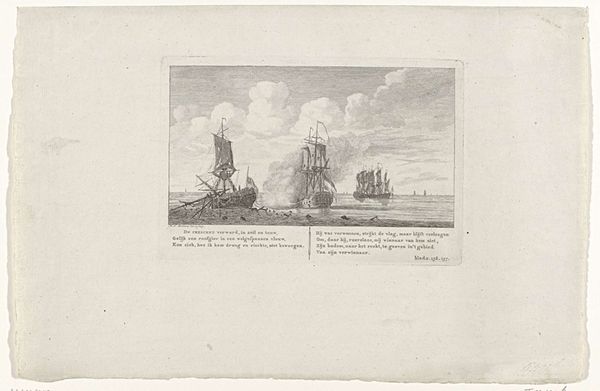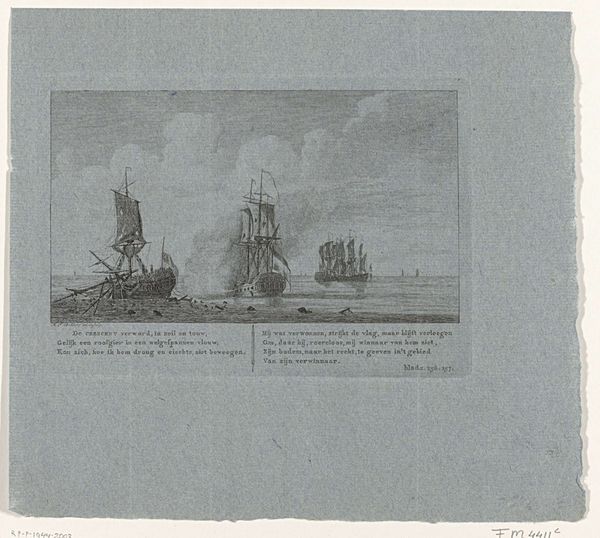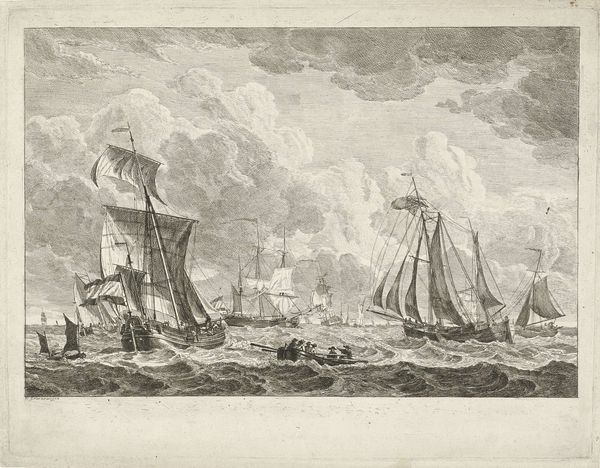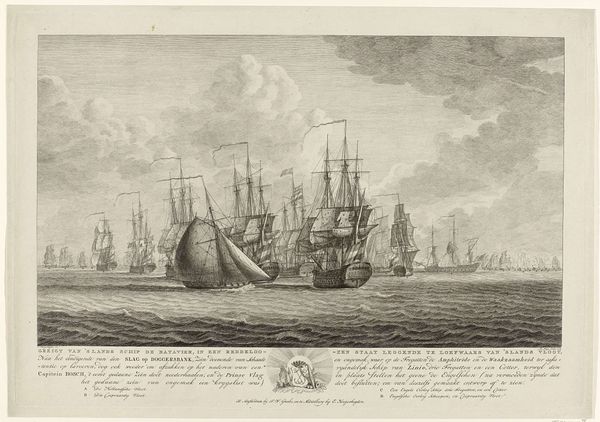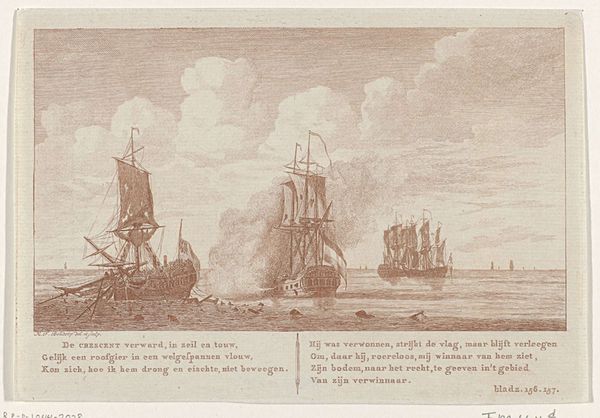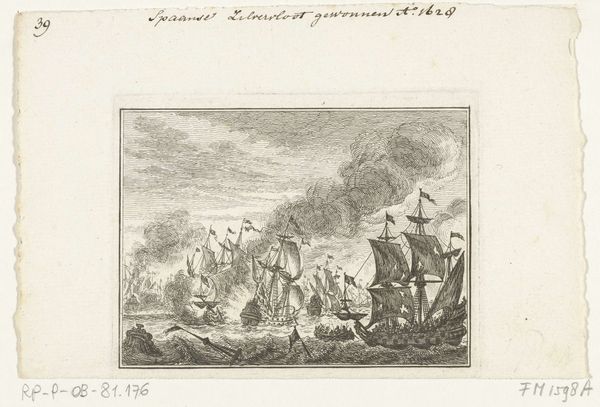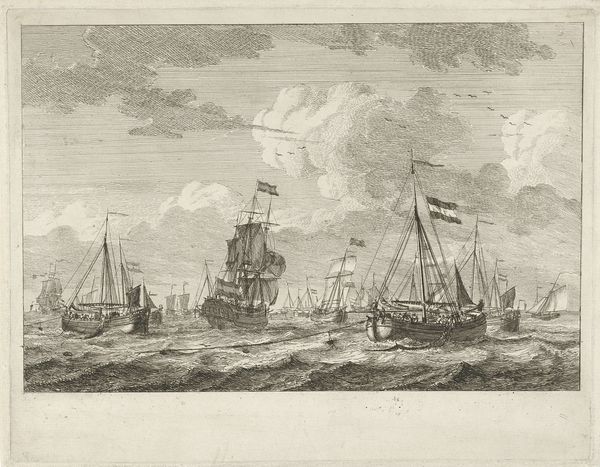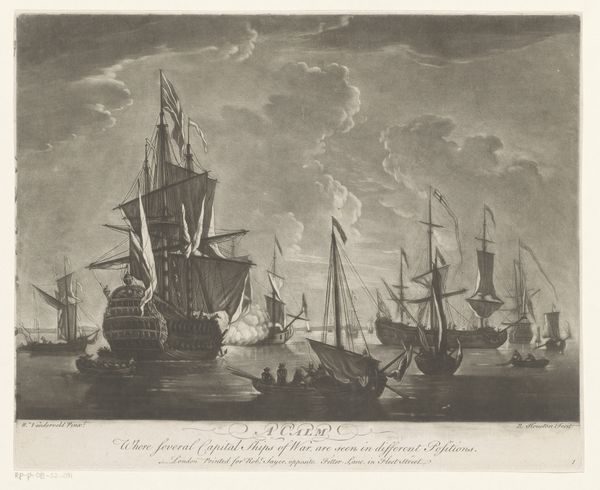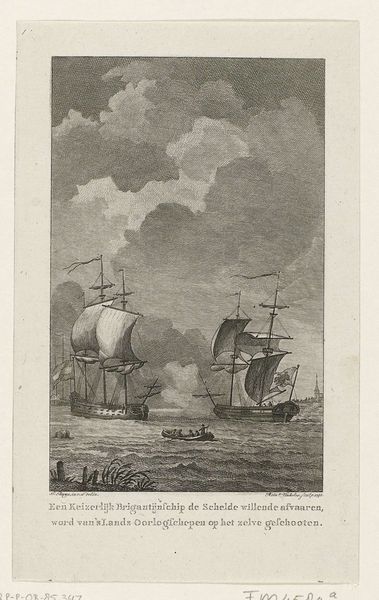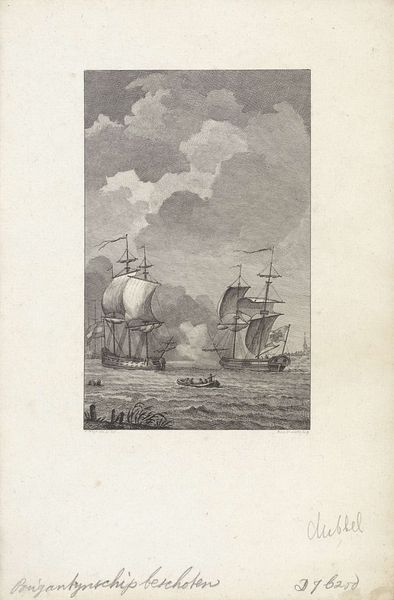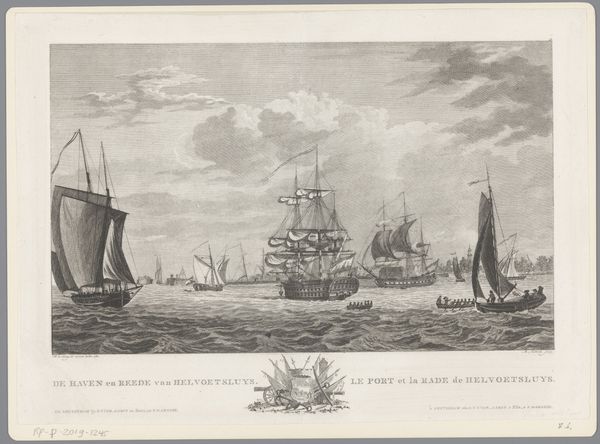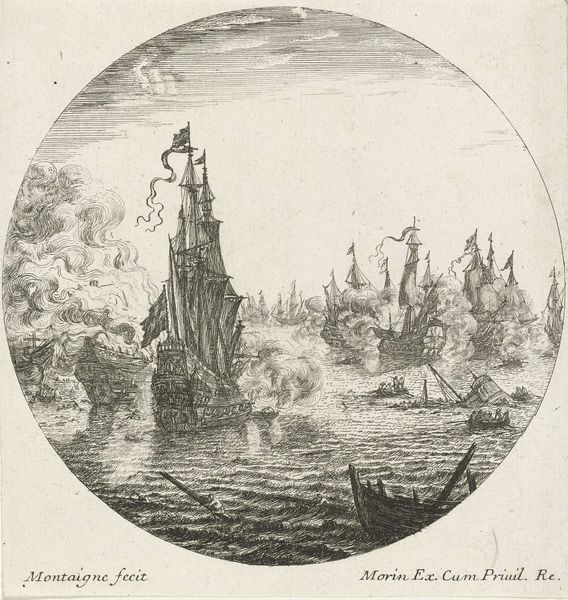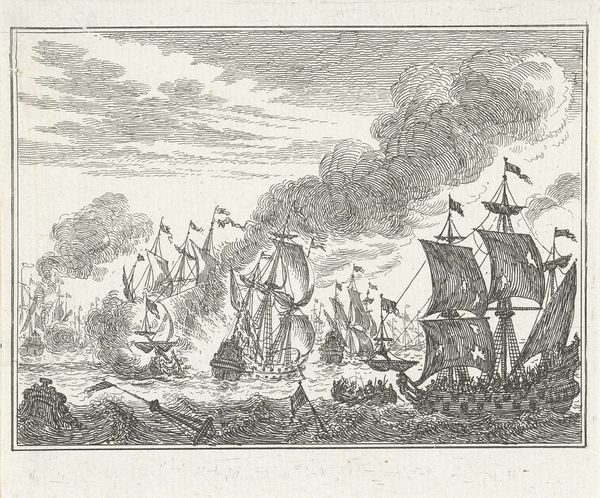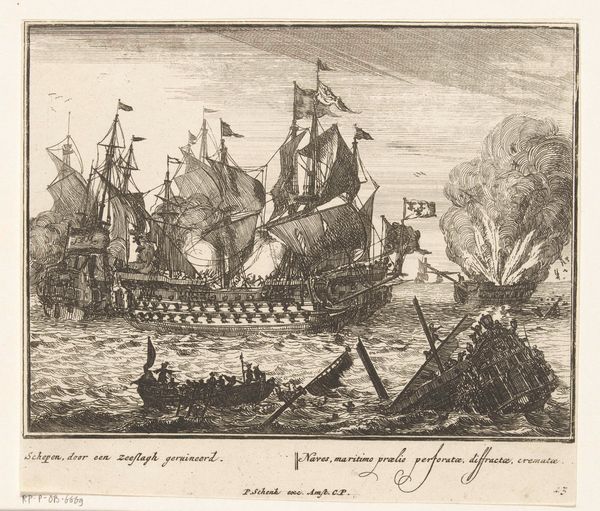
Dimensions: height 230 mm, width 140 mm
Copyright: Rijks Museum: Open Domain
Curator: This engraving is titled "Zeeslag bij Cadiz, 1781," or "Sea Battle near Cadiz, 1781." It was created sometime between 1819 and 1821. What’s your first impression? Editor: The churning clouds mirrored by the rough sea create a palpable sense of unrest. The smoke obscures a definitive victory; it's less celebratory and more... ominous. Curator: Right, it’s far from glorifying. Let's consider the depicted battle itself. This naval engagement at Cadiz occurred during the Fourth Anglo-Dutch War, part of broader conflicts involving colonial power and maritime control. What resonates today about that era of expansionism, conflict, and its legacies? Editor: The ships serve as symbols of both power and vulnerability. They are these meticulously constructed wooden fortresses, but so easily engulfed by the sea. Looking at this conflict frozen in time, I also consider the flags that would have flown—powerful emblems that determined friend or foe. How were such signs and sigils crucial in shaping early modern identity? Curator: Crucial indeed. They signaled allegiances in these global struggles that shifted empires, shaped trade routes, and often had dire repercussions for marginalized populations caught between colonial powers. This specific battle, though a Dutch victory, occurred within a larger narrative of Dutch decline. The engraving offers a lens for exploring how the past impacts the present, influencing debates around national identity, reparations, and justice. Editor: Exactly. And perhaps this artist includes the smoke not just to depict a naval battle, but to represent obscured vision, our blindness toward historical violence. Looking at it this way, even images from what we call the distant past still reverberate profoundly today. Curator: It's an apt comparison—the obscuring smoke is something of an intersection between image and concept. Examining historical events through the artistic process encourages questions about the complex motivations behind conflicts and opens discourse on colonial consequences, and I feel like our short viewing is hardly enough. Editor: Absolutely. Analyzing the symbols helps illuminate how potent they can be—visually or otherwise. These echoes of battles gone by persist, inviting a continuous and crucial conversation.
Comments
No comments
Be the first to comment and join the conversation on the ultimate creative platform.
